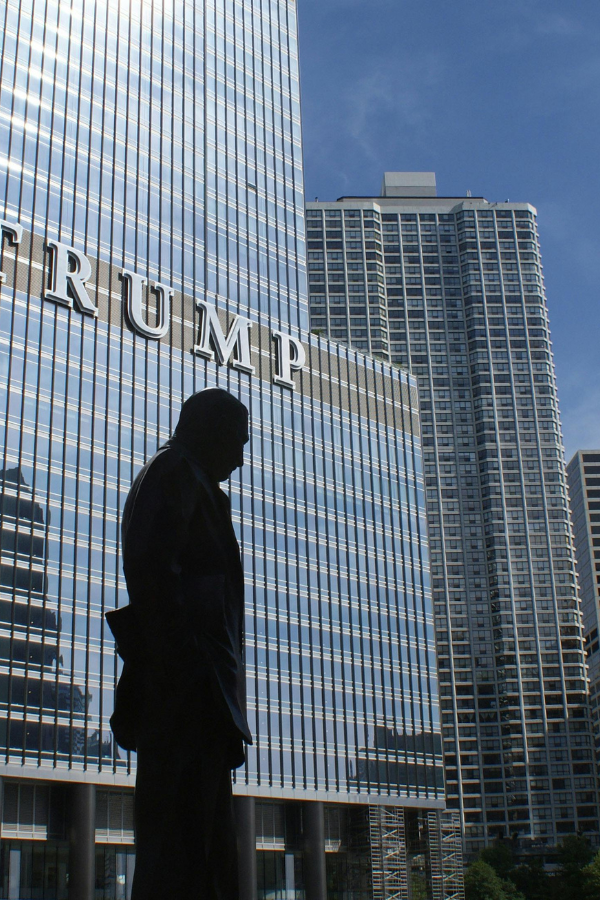Trump’s Tariff Tango: India’s Trade Dance with Uncertainty
11th April
Trump’s Tariff Tango: India’s Trade Dance with Uncertainty
In the latest round of global trade tensions, U.S. President Donald Trump’s decision to slap a hefty 26% tariff on all Indian goods entering the United States has sent ripples through the global economy. While the move may seem like just another chapter in Trump's trade battles, the real question on the table is: how will it impact India, and what’s the long-term fallout for both nations?
The Tariff War Heats Up
The decision, announced with much fanfare, reflects the stark contrast in trade relations between the two nations. Despite the warm diplomatic ties and frequent praise between Trump and Indian Prime Minister Narendra Modi, business deals are taking a different route. Trump’s new tariffs come after India’s own decision to impose a 52% tariff on U.S. goods—a retaliatory move that raised eyebrows on both sides of the Atlantic.
To put things into perspective, prior to this tariff showdown, the U.S. had a relatively modest 3.3% tariff on Indian products, while India’s import tariff on U.S. goods sat at 17%. But as trade relations became more strained, tariffs skyrocketed, and now the 26% tariff on Indian exports to the U.S. looms large.
India Strikes Back: An attempt to bridge tensions.
Not one to back down easily, India wasted no time in retaliating. In a move that sent a clear signal of its resolve, the Indian government announced significant cuts in import duties on iconic U.S. products—think Harley Davidson motorcycles and bourbon whiskey. This is more than just a gesture; it's a strategic recalibration of trade priorities.
For example, Harley Davidson imports—which were previously subjected to a steep 40-50% tariff on fully built-up units and 20-25% on semi-knocked-down units—have now seen a reduction in duties. Similarly, in the 2023-2024 fiscal year, India has slashed the tariff on bourbon whiskey from a hefty 150% to a more modest 100%. These cuts are not just a symbolic nod; they represent India’s attempt to balance the scales and reframe the conversation around trade.
The Power Play: U.S. Demands and India's Countermeasures
But the pressure isn’t all one-sided. The U.S. is pushing for its own set of demands. Chief among them? Duty cuts on American farm products entering India. In 2024, India imported nearly $2 billion worth of U.S. agricultural goods, including $450 million in alcoholic beverages and $1.3 billion in fruits and vegetables. A cessation of these imports could spell a loss of approximately $740 million in duties for India.
On the flip side, India has been vocal about its willingness to purchase more American oil, liquefied natural gas (LNG), and defense equipment. This move is intended to balance its growing trade surplus with the U.S. and perhaps pave the way for future negotiations.
India's Resilient Economy: Unscathed, for Now
As the U.S. dials up the pressure, India’s economy is showing signs of resilience. Unlike China, which has felt the brunt of U.S. tariffs—reportedly as high as 34%—India's economy remains relatively unscathed. Analysts suggest that India’s diversified trade routes, stretching from Europe to the Middle East, could help mitigate the impact of Trump’s tariff tactics. While the U.S. may dominate headlines with its tariffs, India’s ability to adapt and seek new trade partnerships will likely soften the blow.
Sectors on the Brink: What’s at Risk?
It’s not all smooth sailing, though. According to the *Economic Times*, several key sectors in India are bracing for impact. Electronics, a major export category, worth $14 billion, and jewelry and gems, valued at around $9 billion, are expected to feel the sharpest sting from these tariffs. While pharmaceutical and energy products are exempt from the latest round of tariffs, the damage to these sectors could still be significant, potentially reshaping India's export landscape.
So, What’s Next for India?
The road ahead is uncertain. Trump’s tariffs on India are more than just a trade dispute they’re a high-stakes game of economic chess, with each side maneuvering for position. India’s strategic countermeasures, such as reducing import duties on select U.S. goods and diversifying trade routes, showcase its adaptability. However, the real test will be how the Indian economy continues to weather this storm in the long term. With the fate of billions of dollars in trade hanging in the balance, one thing is clear: the tariff tango between India and the U.S. is far from over. The question remains—who will come out on top in this high-stakes game of global trade?
REFERENCE: Economic Times

